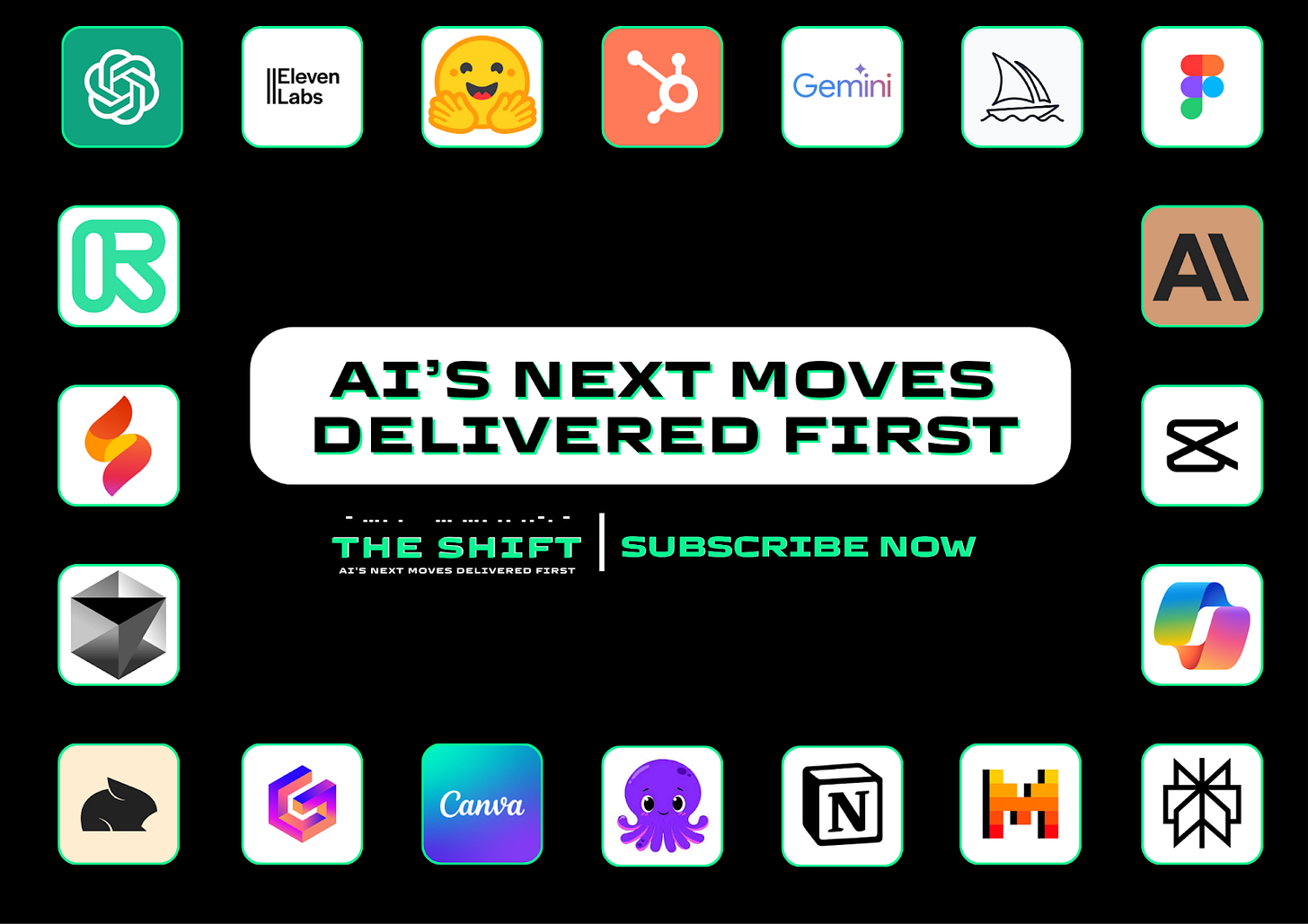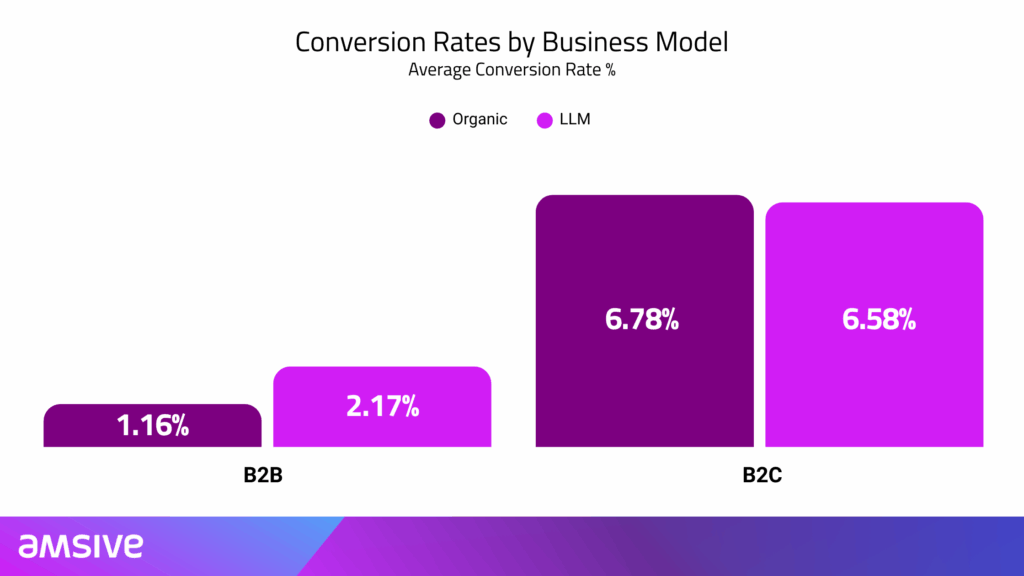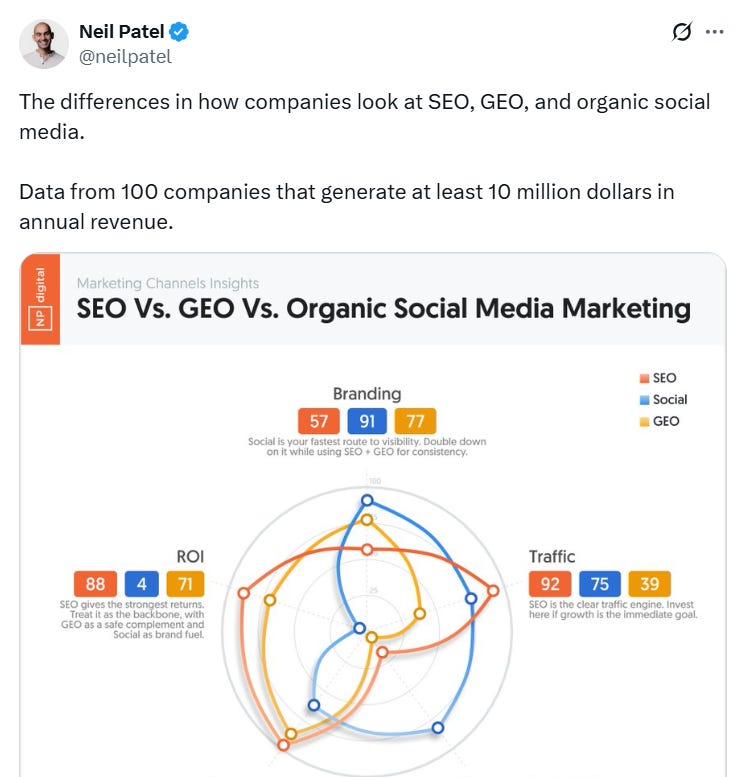The Silent Killer of Creative Testing
🧠 The Hidden Cost of Fingerprint Fragmentation, The truth about LLM traffic vs SEO performance, and more!
Howdy Readers 🥰
In this newsletter, you’ll find:
🧠 The Silent Killer of Creative Testing
🔍 SEO vs LLM Traffic: What the Latest Data and Google Say
🚀Tweet of the Day
If you’re new to Buyology then a hearty welcome to you, You’ve reached the right place alongside 50k+ amazing people, Before you forget, if someone forwarded this newsletter to you, don't forget to subscribe to our newsletter so you never miss out!
Together with The Operator’s Stack
If Your CAC Payback Takes 9 Months, You’ve Already Lost.
The fastest-growing brands in 2025 aren’t waiting for capital. They’re engineering <90-day CAC paybacks while pulling future revenue into today’s bank balance.
How? By stacking prepaid bundles, supplier-funded inventory, and extended payment terms that give them 60–120 days of float to redeploy into growth. That’s how ad dollars start compounding instead of draining.
Financial Alchemy gives you the exact playbooks, models, and calculators to make it happen. Inside, you’ll see:
How Wayfair runs a 34-day cash cycle.
Why Gymshark scaled without outside capital.
The frameworks to identify high-LTV, fast-payback channels before your competitors.
And you won’t just get one book. For $9, you’ll also unlock:
Networked Growth Engines – Community playbook, referral ROI calculator (Excel), and 4 partnership marketing templates.
Rewriting the DTC Rulebook – Emotional Storytelling Framework, Brand Value Canvas, Owned Media Checklist, plus the Assumption Buster & Decision Matrix.
Start small, scale fast; these systems are designed to pay for themselves before the quarter ends.
Get your 3-in-1 bundle today and turn cashflow into your unfair advantage!
🧠 The Silent Killer of Creative Testing
Meta doesn’t see your 12 ads. It sees one fingerprint.
That’s why your “diverse” testing strategy is really just a creative feedback loop in disguise, and it’s quietly killing your delivery at scale.
From 2021 onward, Meta lost access to explicit signals like interests and pixel-level user behavior. In response, the system evolved.
Meta’s ad engine now relies on computer vision and embedding models to compress your creatives into high-dimensional “fingerprints”, numerical representations of visual and contextual similarity.
These embeddings are used to decide who sees what. Not your audiences. Not your copy. Just this fingerprint.
If five of your ads share similar framing, actors, pacing, or product positioning, even if the headlines are different, Meta clusters them.
And when those clusters saturate a micro-segment of your TAM, performance tanks. ROAS declines. CPMs rise. You panic and make “new” ads… that look exactly the same.
🧩 3 Failure Loops Fingerprint Fragmentation Creates
Lookalike Saturation: When Meta clusters your ad variations under one fingerprint, you unknowingly max out frequency to a small sub-audience. You think it’s “ad fatigue” but it’s actually audience exhaustion by proxy.
Performance Collapse at Scale: Since the algorithm sees your batch of creatives as a single unit, you’re pinned into one segment. Increasing spend just accelerates burnout inside that isolated bubble.
Creative Learning Gridlock: Because Meta thinks your variations are redundant, new learnings don’t register. Your “creative testing” becomes creative stalling, failing to unlock new segments or behavioral signals.
🛠 How to Fix It: Build for Fingerprint Diversity
Start optimizing your creative testing for maximum visual distance, not micro-copy tweaks.
Change scene composition: swap backdrops, props, lighting, framing.
Swap talent archetypes: not just different faces, different energy, tone, pacing.
Vary narrative formats: compare UGC explainers vs docu-style vs silent montage.
Alter use cases and end outcomes: showcase different emotional “after states.”
Use Meta delivery data (not just CTR) as a proxy for fingerprint uniqueness.
If two ads with different copy get 90% similar delivery, the algo sees them as the same.
🧪 Bonus Diagnostic: Fingerprint Drift Index
Track how much each creative batch unlocks new delivery segments week over week. If the overlap exceeds 80%, you don’t have variation, you have repetition.
DTC growth doesn’t die from creative fatigue. It dies from creative convergence. When every ad points to the same fingerprint, you lose surface area for discovery, delivery, and scale.
Fix the fingerprint, or Meta will trap you in your own creative loop.
Together with The Shift
You’re Not Behind on AI. You’re Just Learning It Wrong.
AI is evolving rapidly. But most people aren’t falling behind because it’s too fast.
They’re stuck because they’re learning AI like a subject in school. And AI doesn’t play by textbook rules.
At The Shift AI, we don’t just tell you what’s new. We show you how to:
✅ Rethink workflows with an AI-first mindset
✅ Automate like a hacker, not like you’re replacing a task
✅ Ask smarter questions that unlock better results
If reading this made you pause, wait till you see what happens when you apply it.
Subscribe now and unlock 2000+ AI tools, 300+ high-impact prompts, and free AI strategy courses.
Start shifting from knowing AI to living it.
Subscribe now!
🔍 SEO vs LLM Traffic: What the Latest Data and Google Say
Search is entering a turbulent phase. New research shows LLM referrals don’t convert better than organic search and remain tiny in scale, while Google insists traditional SEO fundamentals still hold in the era of AI-driven search.
The Breakdown:
1. LLM Traffic Still Too Small - Amsive analyzed six months of GA4 data across 54 websites and found LLM referrals converted at 4.87% vs. 4.6% for organic search, statistically insignificant. More importantly, LLM traffic made up less than 1% of sessions, compared to nearly 32% from organic.
2. Conversions Are Inconsistent - Some sites saw LLM outperform, while others lagged, proving no built-in quality advantage. Engagement depended more on how AI tools surfaced content than on referral type. The real gap is scale: organic search remains dominant in both volume and reliability.
3. Google: SEO and GEO Are the Same Work - At WordCamp US, Danny Sullivan said “good SEO is good GEO,” arguing optimization for AI search is no different from traditional practices. The core remains valuable, unique content and solid page experience, not chasing acronyms like GEO, AEO, or LLM SEO.
4. CTR Declines Under AI Overviews - Bloggers flagged sharp CTR drops after AI Overviews launched, even as impressions rose, a “great decoupling” of search visibility. Sullivan admitted bumps along the way but emphasized Google’s focus on refining signals while still rewarding open-web content.
The numbers show LLM traffic isn’t ready to rival search in either conversions or scale, but its growth should still be tracked. Meanwhile, Google is signaling continuity in SEO practices, even as AI reshapes how visibility and clicks flow. For now, the real strategy is balancing proven SEO fundamentals with preparing for fragmented AI-driven discovery.
🗝️ Tweet of the Day
Advertise with Us
Wanna put out your message in front of over 50,000 best marketers and decision makers?
Checkout our Partner Kit here🤝
At Buyology, we care about our readers and want to provide the best possible experience. That's why we always look for ways to improve our content and connect with our audience. It would be amazing if you could hit us up with feedback about our content or absolutely anything, we are always up for a chat 🥰
Thanks for your support, We'll be back with more such content 🥳




